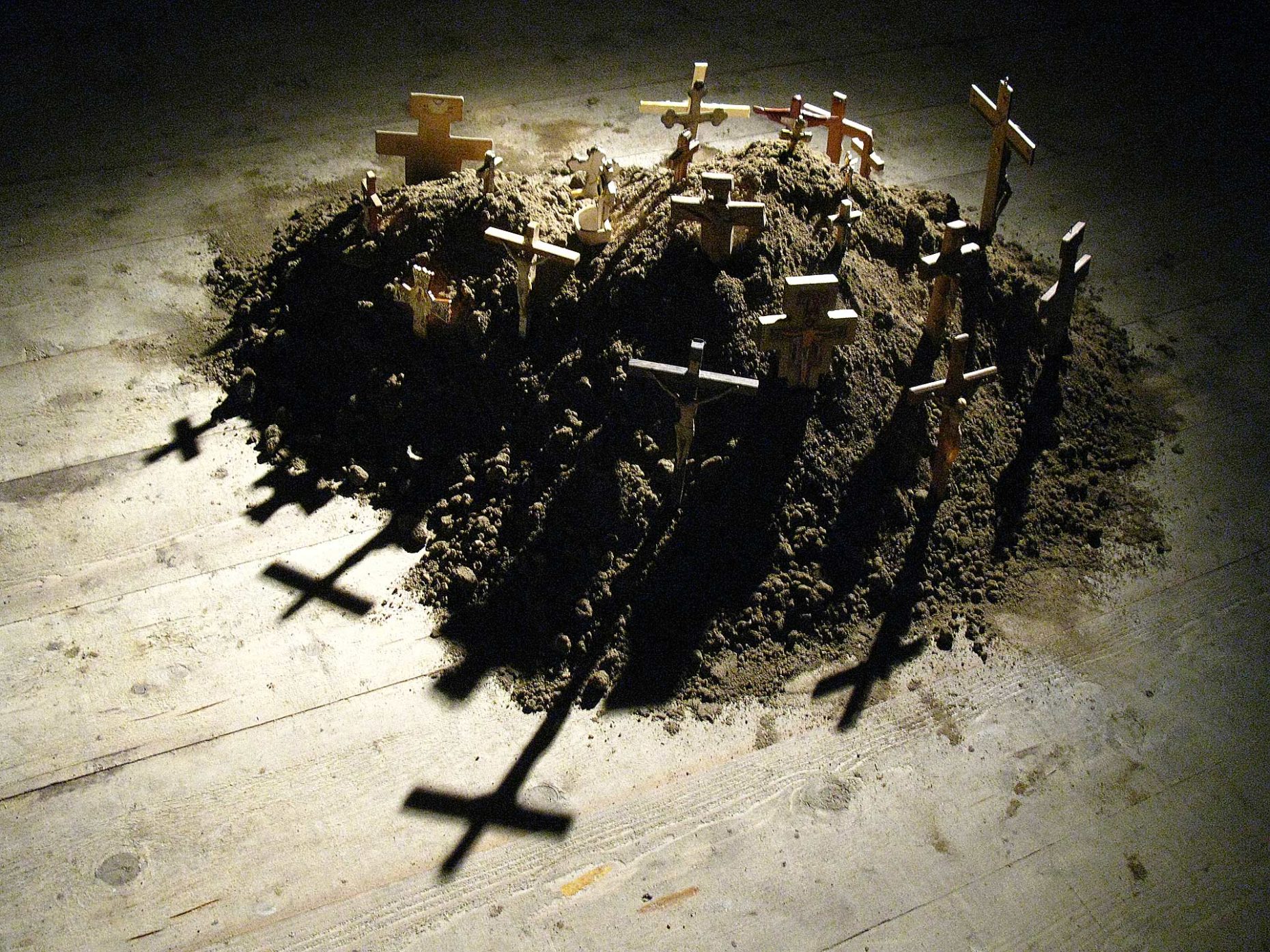Sehnsucht
Stefano Pasquini is a friend whom I respect, but this does not prevent me from getting to know him better every time I see his work, or at least have the possibility to grasp new aspects of his subconscious that, perhaps without his knowledge, emerge in the condensation and shifts in meaning that his work produce. Like Freud rightly teach us, at the base of these mechanisms there is a repressed energy that frees itself thank you to the violations of the rules that fight social impositions. The works with the santini, the little effigies of saints, glued or stuck with scotch tape, or tied up against improbable rocks, the mental associations that spring up are many, and so are the links of previous works by Stefano. The first is a passage from the bible that more or less reads as such: “But if you cause one of these little ones who trusts in me to fall into sin, it would be better for you to have a large stone tied around your neck and be drowned in the sea”. The second one is the little effigy that pushes one’s infantile faith almost towards superstition, that it also becomes a generational object of desire that is common to children and the elderly: for one to dream of the sky, for the other to ward off fear.
But what is the main conjunction between these two elements? Knowing that recently Stefano Pasquini had himself de-baptised from the Roman Catholic Church, this is undoubtedly a sign for a spiritual quest of the artist that goes beyond any hypocrisy, institution or formality, in a search for the true and pure, that already in the past was searched in a series of performances that saw him blindfolded, groping in the search for a lost ideal, victim of a romantic Sehnsucht. This German term is erroneously translated as Nostalgia, yet nostalgia is the desire for something we have lost, whilst sehnsucht is literally the spasmodic search for something that we know exists, but we have never seen. This is the true lust that becomes the engine of his artistic hyper production, in this transformed conservation of every daily object or memory that is sublimed and distilled through the filter of “Streben”.
It’s a passage from hyperbole to the oxymoron without forgetting irony. It is not by chance that I often call Stefano Charakter, exactly to underline his saturnine lunacy…
Annalisa Cattani, 2010



